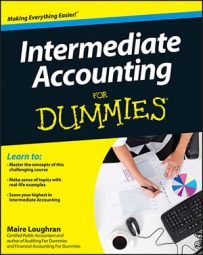Figuring COGS and valuing ending inventory using all the cost flow assumptions is pretty easy when you get the hang of it. Plus, larger companies have software tailored to the task, which makes the undertaking of a physical inventory the heavy lifting chore for the accounting department.
However, a monkey wrench is thrown into the whole thing because many companies use LIFO for tax and financial statement purposes and another method (FIFO, specific identification, weighted average) for internal reporting.
Managerial accounting classes discuss internal reporting, but one example is measuring the performance of different company segments to see which one is operating the most efficiently.
The pros and cons of LIFO
The LIFO method offers two major advantages related to satisfying the matching principle and paying taxes.
Matching revenue to expenses: Remember that LIFO more closely matches revenue and expenses. The business purchases the inventory closer to the date of sale than under FIFO, which more closely matches revenue to expenses. This fact is a definite plus because financial accounting loves the matching principle.
Reducing taxable income: In times of rising prices and stable inventory levels, LIFO also has a major tax effect. Higher purchase prices give the company a higher COGS with LIFO versus FIFO. A higher COGS reduces net and taxable income. Of course, if the company is operating in a time of deflation rather than inflation, the effect is the opposite.
Companies that use the LIFO method have two major disadvantages as well: reduced net income and understated current assets:
Reducing net income: The flipside of the second advantage is that, in times of rising prices, LIFO shows less net income than FIFO. Although the company pays less in taxes, it also appears to be making less money, which investors and creditors don’t want to see.
Understating current assets: Compared to other inventory methods, LIFO shows a lesser dollar amount sitting in the inventory account because inventory is valued using the oldest costs. This fact wreaks havoc with any ratio analysis that uses current assets.
LIFO reserves
LIFO reserves are the difference between the inventory carrying value that a company reports if using LIFO and the inventory carrying value with another method that the company uses for managerial or financial accounting purposes, such as FIFO. For example, Carter Hauling’s ending inventory on December 31, 2013, is $275,000 using FIFO and $225,000 using LIFO. The LIFO reserve is $50,000 ($275,000 – $225,000).
Now let’s say that Carter’s LIFO reserve on December 31, 2012, was $15,000. The journal entry to adjust LIFO reserve at year-end 2013 debits cost of goods sold and credits LIFO reserve for $35,000 ($50,000 – $15,000). This change in LIFO reserve from one period to the next is called the LIFO effect.
The chart of accounts name for the contra-inventory account that holds the difference between LIFO and another method can simply be LIFO reserve, although your textbook probably calls the account “allowance to reduce inventory to LIFO.”
When a company uses the LIFO method, it may have to include a LIFO reserve amount in its notes to the financial statement. This reserve amount gives the dollar difference between ending inventory when using FIFO and LIFO.
LIFO Liquidation
Everything must go! Well, that’s sort of what happens when LIFO liquidation takes place. Breaking it down to the lowest common denominator, LIFO liquidation occurs when a company sells more inventory than it purchases in the current period. In this case, older inventory costs that are probably lower than current replacement costs are matched with current sales. This fact causes the cost of goods sold to record as artificially low and inflates net income.
The authors of your intermediate accounting textbook probably discuss layers in conjunction with LIFO liquidation. When inventory levels rise (that is, inventory doesn't move as quickly as anticipated) these “layers” the author refers to are just the additional valuation of inventory that’s eventually moved to cost of goods sold when inventory quantities drop.

